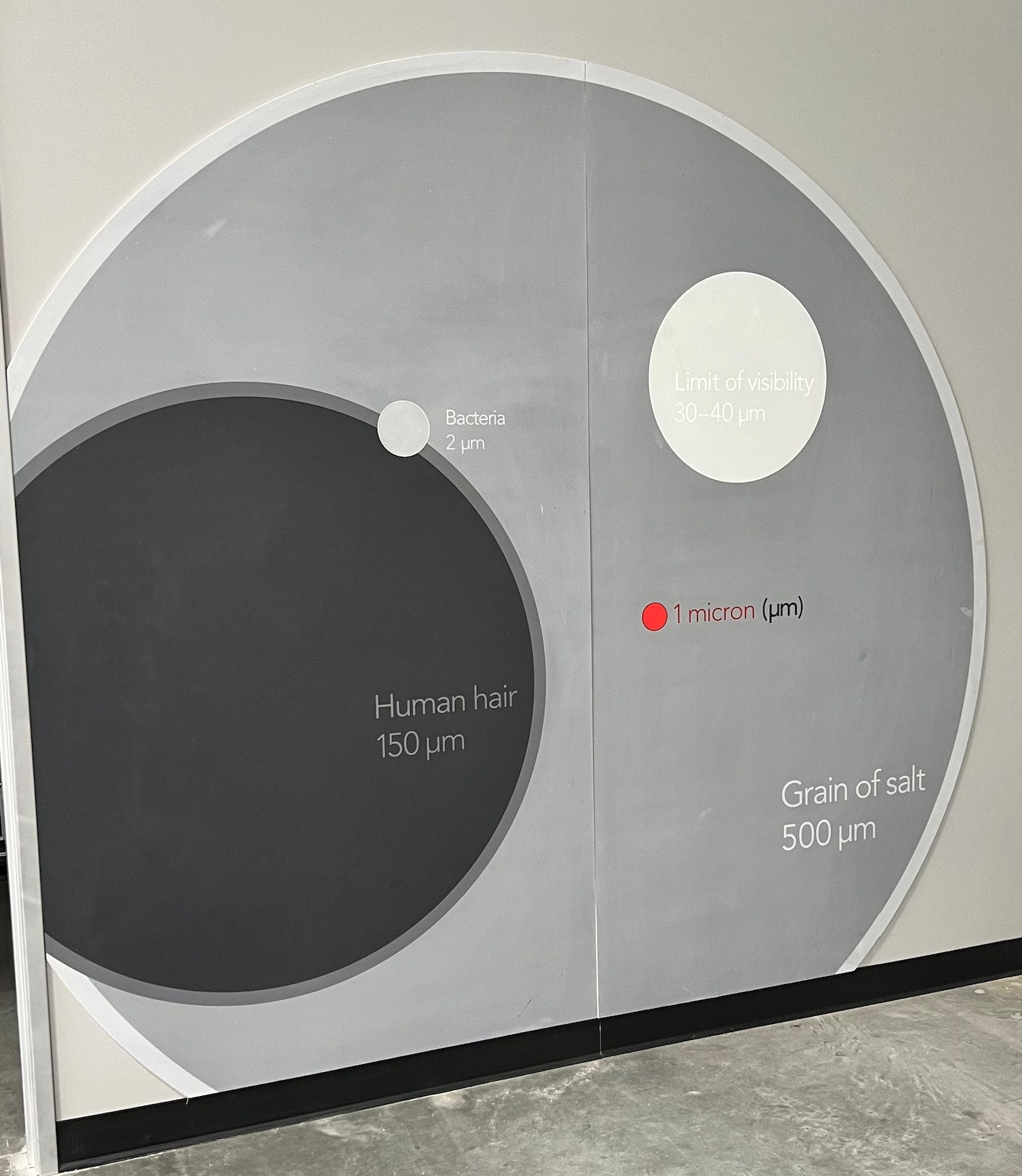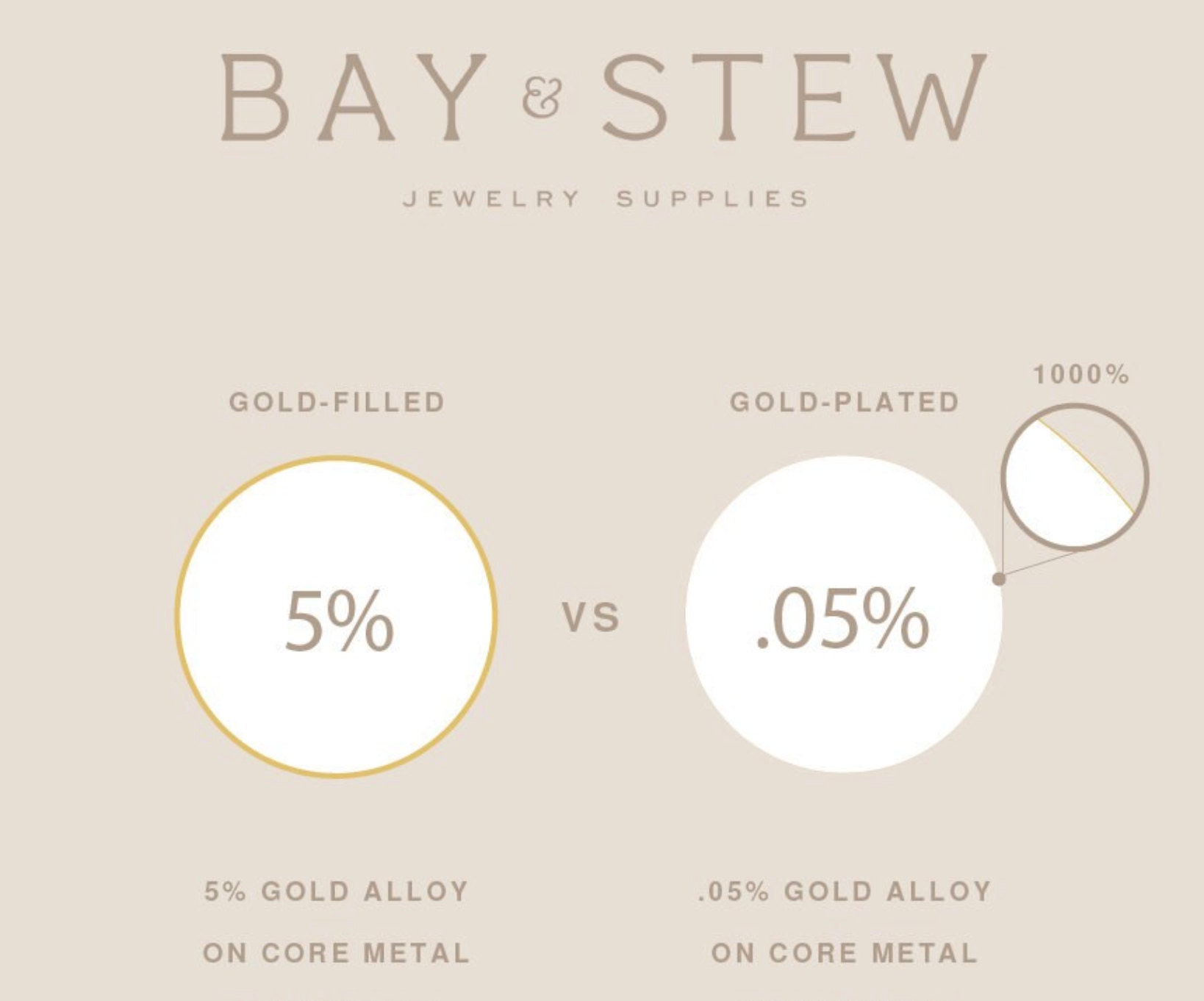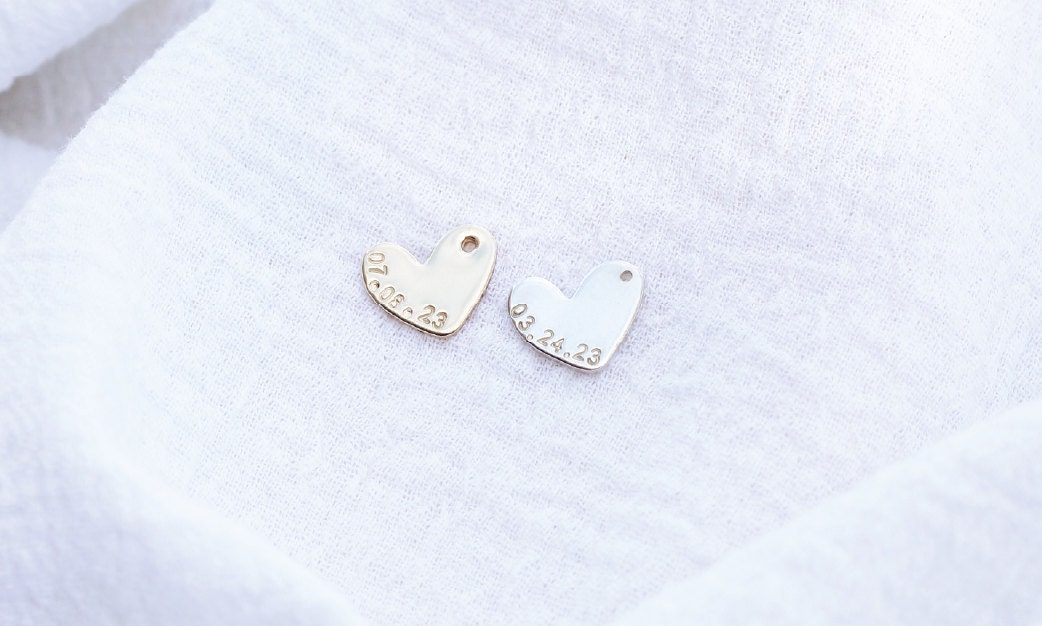Gold plated, gold vermeil, or gold filled? What do these terms mean, and does the material quality really matter? (Yes!) We’ll break it down, so you can choose the best gold jewelry type for your project, budget, or style.
Gold filled vs. plated – what’s the difference?
Gold plated jewelry is produced through electroplating or “gold dipping,” a process that deposits a microscopic layer of gold onto the brass metal surface.
A lot of gold plating is less than 0.5 microns (0.0005 millimeters) thick. Thin plating can be easy to rub and scratch off with daily wear. How fast tarnish occurs with gold plating is dependent on the care of the piece as well as how much plating is used. Ask your supplier how many microns are used. Plating can be anywhere from as little as .1 microns or as thick as 10 microns.
How big is 1 micron? Here is a graphic to help you visualize:

So, what is gold filled jewelry? It’s an affordable alternative to solid gold jewelry. The manufacturing process is very different from gold plating. Gold filled metals are permanently bonded with heat and pressure, not electroplating.
The amount of gold filled on the piece matters too. To meet FTC standards and earn the official USA GF stamp, gold filled must have a 5% ratio of 12- or 14-karat gold on the surface, compared to the weight of its core. That means, on average, gold filled jewelry can have 100 times more gold on the surface than gold plated alternatives.

What is gold vermeil?
Gold vermeil is increasingly popular among small jewelry brands. You can think of gold vermeil like a special category of gold plating with a sterling silver base and 2.5-micron surface layer of gold.
It can be considered higher quality than most gold plated metals because of the 2.5 micron minimum required to be able to call it gold vermeil. However, because it’s electroplated and can still tarnish, it can’t compete with the durability or lasting value of gold fill, especially for permanent jewelry.
Does gold filled jewelry tarnish?
Because the base metal is permanently bonded with a thick layer of 14k gold, gold filled jewelry is surprisingly durable. That’s why gold filled chains are a must have for permanent jewelry that won’t be taken off while showering, swimming, or applying perfumes and lotions – the style demands a high level of durability.
Gold filled jewelry lasts considerably longer than gold plated styles, especially with routine cleaning and care.
How can you tell gold plated from gold filled?
Reputable wholesale gold filled jewelry suppliers will always disclose the quality of jewelry materials that you’re purchasing. Whether you’re buying footage chains, jump rings, connectors, or charms, just look for GF (gold filled) or GP (gold plated) on the listing title.
Not all 14k gold filled jewelry is stamped, depending on the size of the item. But if it is, you might see any variation of “GF,” “gold-filled,” or “1/20 14K,” which means that the material has one part 14 karat gold for every 20 parts of other metals. That shows that the material meets the 5% threshold required by the FTC for gold filled quality.
Gold plated items are cast while gold filled items can only be made from sheet, tubing or wire. There are many designs that you can create with gold plating or gold vermeil while gold filled can be very limited in options due to the way it must be made.
Can you buy wholesale gold filled chains online?
Bay & Stew offers a wide range of gold filled jewelry supplies for small jewelry brands, permanent jewelry artists, and DIY jewelry makers who want high quality materials without having to buy with minimum order or credit requirements.
Browse and shop:
- 14k gold filled footage chains, sold by the foot
- 14k gold filled chain connectors, sold individually or packs
- 14k gold filled jewelry charms, sold individually or packs
- 14k gold filled jump rings, sold in packs
- Finished chains, rings, earrings, sold individually or packs

